It doesn’t seem that long ago, but maybe it was, that the essence of a sport airplane was a biplane. The greatest generation had truly settled down and while looking around for something fun to do decided, among other things, to have some fun with airplanes.
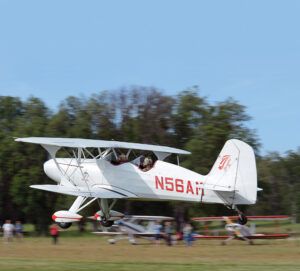
At the time rivets were being set in great numbers in Wichita as the economics and liability lawyers had yet to do their mischief. Cessna, Piper and Beechcraft were filling the demand for going places airplanes while the homebuilding ranks—not to be confused with the still-to-come kit aircraft movement—was populated by people handy with tools and time on their hands. Working from little more than paper plans but backed by a robust surplus inventory supplied by the arsenal of democracy, these intrepid hobbyists had little incentive to invent the next great thing in high-speed amateur aviation. If you wanted to zip somewhere in a little airplane, there were brand-new ones literally in showrooms in the larger cities, along with plenty of lightly-used examples on the market. Those new factory jobs were pricey, yes, but not so much the better heeled couldn’t afford to buy a new one at intervals, and consequently the four-seat used market offered a more compelling combination of affordability and utility than it might today.
As more of an alternative rather than a parallel market as seen today, what the homebuilders built was a little less practical but a whole lot more fun. Racy numbers such as the Midget Mustang or the somewhat more mainstream Thorp T-18 were born in this era along with a slew of biplanes. This was the time of the Pitts Special as a casual weekend flyer as opposed to specialized aerobatic tool. Stardusters, Starduster Toos, Hatz, Baby Great Lakes, Meyers Little Toots, Mong Sports, EAA Biplanes and their Acro Sport follow-ons, plus a fair number of one-off projects, formed a considerable percentage of airplanes built in garages as the beatniks gave way to hippies and ultimately to the suburban mall crawlers. Joining only a little later, the Skybolt, and perhaps ultimately the very much a kit Christen Eagle, appeared to fill their niches in the two-winged offerings.
This isn’t to say the sky was dark with struts and wires—then as now spam cans ruled the ramp—but throw a pancake breakfast and for sure there would be biplanes in attendance. The open cockpit was already a bit novel, but generally you didn’t have to look far to find a pilot with some biplane time. Many had taken their primary instruction in Stearmans, UPF-7s or N3N-3s during WW-II. Others had dusted fields in the same machines or had at least hopped a ride in one of those lumbering rumblers somewhere along the line. Airline captains might have kept one around for nostalgia on warm afternoons or built one of the sportier homebuilt biplanes as their general-purpose off-duty ride.
That last point is worth emphasizing. In their prime the sport biplanes weren’t just for airshows or the hot rod set; they were everyman’s sport plane. Of course they could do some gentleman aerobatics, but their real calling card was the ability to do a little bit of everything. Besides easily inverting, they were equally good for short weekend hops or perhaps surprisingly to moderns, travel. As always, there was some romance attached to having two wings, perhaps even more so than today. But for all-around knocking about, a sport biplane was still pretty mainstream.
Apparently not so much today, to our detriment. As you have divined by now, I tool around in a sport biplane, a Starduster Too, typically with the front cockpit covered. And I’m here to say that showing up in a biplane can garner you everything from wild enthusiasm from the legions of the unwashed to cold indifference from the “my EFIS is bigger than yours” crowd. I’ll never forget the looks I got taxiing past a Cessna 182 on Camarillo’s expansive ramp late one summer afternoon. For reasons all their own, the two strokes in the 182 were in full flight-deck regalia—shoulder boards, neckties, trim white shirts. As we passed close aboard, each keeping a wary eye that our wingtips not intersect, the baffled wonderment of what they were seeing burned right through the Plexiglas. To fondly recall the immortal Henry N. Manney III, “…it had been a long time since I had been stared at by a box full of jack-o’-lanterns,” and I wondered if they briefly thought they were victims of some time warp.
Money Talks
What really brings home the change in the biplane landscape are the prices even good sport biplanes, er, command these days. This is especially true once past the better or newer Pitts Specials, which remain the darling of the flip-flop crowd and in factory-built form retain fiscal viability as aerobatic and advanced tailwheel trainers. While it is true that builds from the homebuilding era have always spanned the full spectrum of workmanship, today even the best-built examples struggle like a two-up Cessna 150 in summer to brush their tail beacons against the $40,000 ceiling. About $25,000 is more like it. Combine a homebuilt biplane with that greatest of all resale evils—the single seat—and things are truly dismal. Excellent older airplanes, award-winning single seaters, can go for as little as $12,000 unless it’s a Pitts. Even the more humble early Pitts are hardly sales skyrockets.
Why such low appreciation for these exciting sportsters? Granted, it isn’t 1969 anymore, and in a digital world anything with a spare wing is an anachronism. Draggy biplanes aren’t overly fuel efficient, either. Yet experience shows people still love biplanes and their evocation of some mythical aviation Camelot is as powerful as ever. Show up in a leather hat and jacket, and I guarantee you’ll get admiring comments and many questions, not all of them relating to your sanity. Biplanes are still cool.
On the other hand, plenty of sport biplanes are simply old, dating from the 1970s, and come with the usual squawk list inherent to older iron. Still, with normal maintenance, such airplanes are hardly scrap and for far less work than building an all-new kit, a flying older biplane can be brought to an enjoyable standard for some labor and imported beer money.
Another explanation commonly offered today is few contemporary pilots “know how to fly a biplane” and somehow they find them at least mysterious if not intimidating. There’s some truth in this, although what’s really different about flying a biplane compared to a monoplane is a bit of a mystery to me. If you’ve never flown one, or known someone who did, then I guess the cold, the heat, the hurricane wind noise, phone booth ergonomics, limited visibility, a sink rate akin to Kohler’s best tossed off a roof, outright blind landing characteristics and the sometimes athletic runway dance moves might be reason to pause. But all of these are either overrated or actually easy to overcome with a bit of coaching, should there be a willing instructor about. And there’s a big rub: We’ve reached the point where finding a CFI with the wind in his wires is on par with a tailwind in both directions.
There are work-arounds, of course. Most obviously, aerobatic-oriented flight schools typically keep a two-hole Pitts for dual, and that includes getting the landings figured out. It might mean some interstate travel to attend such a school, but it’s worth every dollar. Furthermore, there’s still a healthy number of two-wing enthusiasts and some new, rather modern and well-detailed machines coming out of home workshops. I don’t know if I’d call it a backlash, but the knowledge lives on and mentors are still to be found.
So, if metal and glass seem common, or time to build is an issue or you’re simply looking for something more at one with the sky, this is a fine time to give two wings a try.

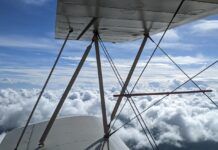
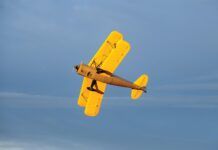
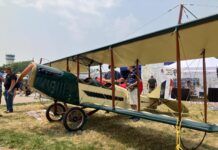
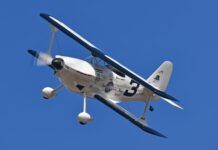
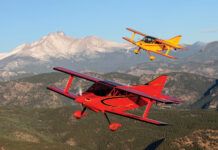
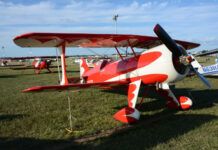
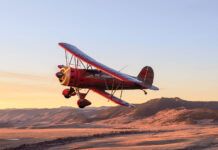
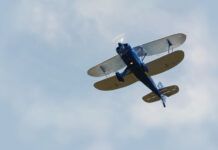
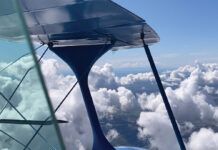
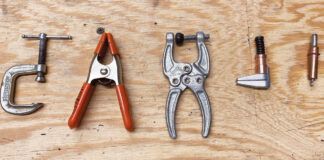
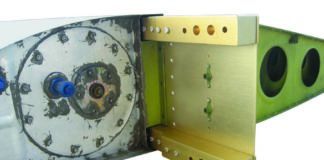

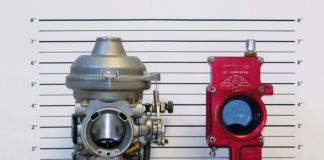
Great article, Tom! I owned a gorgeous Starduster Too, deep blue with silver stars, for ten years and had a wonderful time with it. I remember a fly-in at the Wilkes County airport. My friend flew his beautiful, polished Cessna 140 and I flew the Starduster. When we taxied in, they waved him to the line with everyone else, and sent me to park up front next to the P-51.